Authentication
Set up Kinde to manage user authentication for Semaphor Self-Hosted Edition
📘 This guide walks you through creating a Kinde account to authenticate your organization's users who will be logging into the Semaphor console. Note: You don't need to configure your product's end users (who access embedded Semaphor dashboards) in Kinde - they are managed separately through your application.
What you'll set up
- A Kinde account and business
- A Kinde application for your product (Next.js example)
- Authentication methods for your users
- Environment variables to connect your app to Kinde
1) Create your Kinde account and business
- Go to kinde.com and sign up or sign in.
- Enter your Business details:
- Business name
- Kinde domain (subdomain)
- Region where your data will be stored
- When prompted, choose Start project from scratch.
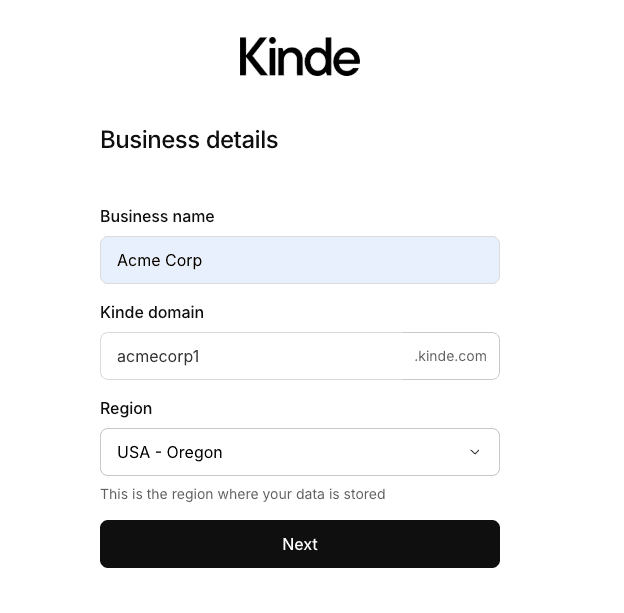
2) Create your application
- Choose Next.js as your framework.
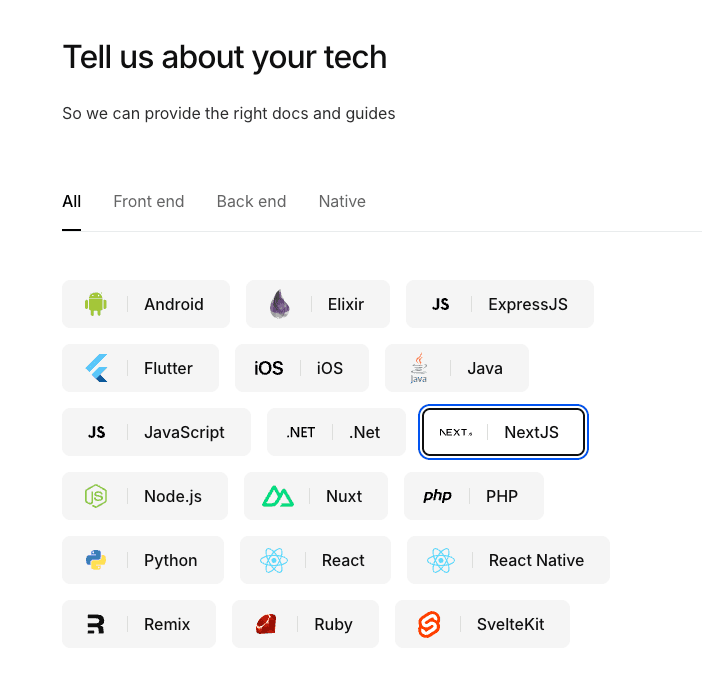
- Select the login options you want to offer to your users, such as email and password, social login.
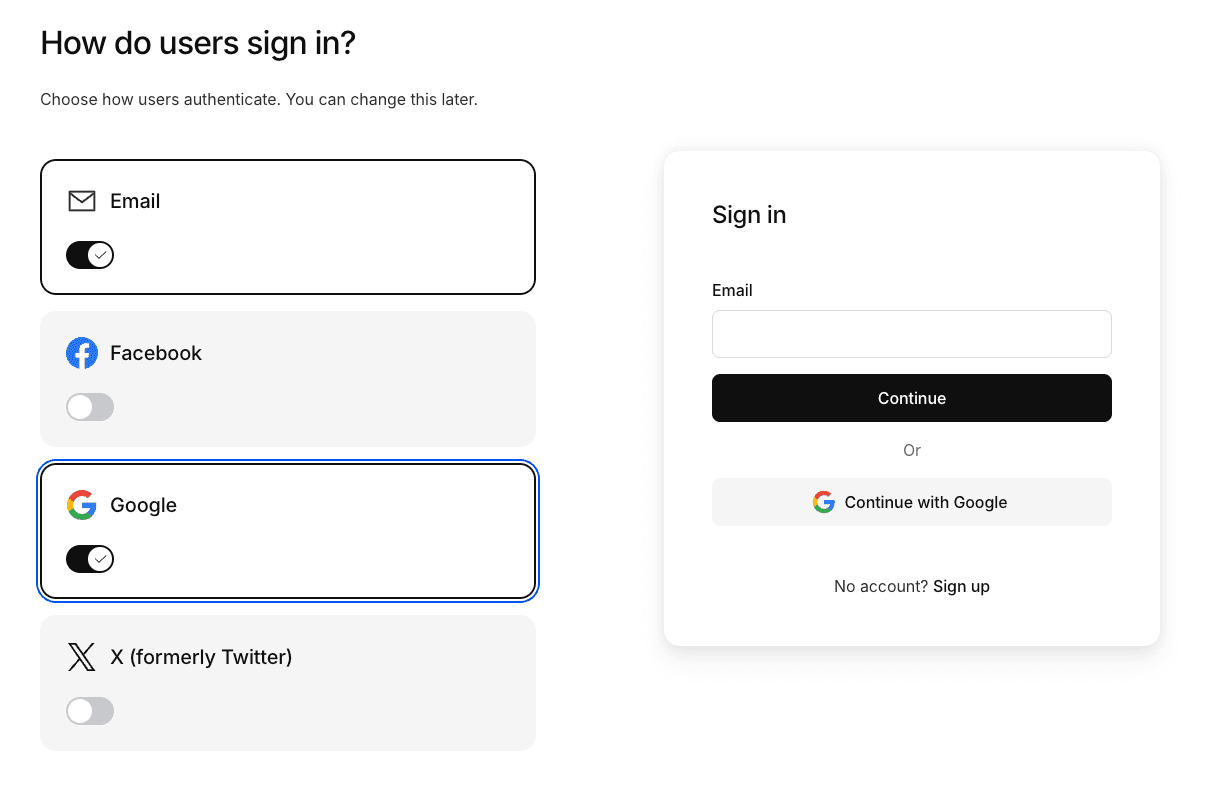
- If asked to scaffold a new Next.js project, select "No thanks".
3) Review your Kinde dashboard
After onboarding, you'll land on your Kinde home screen.
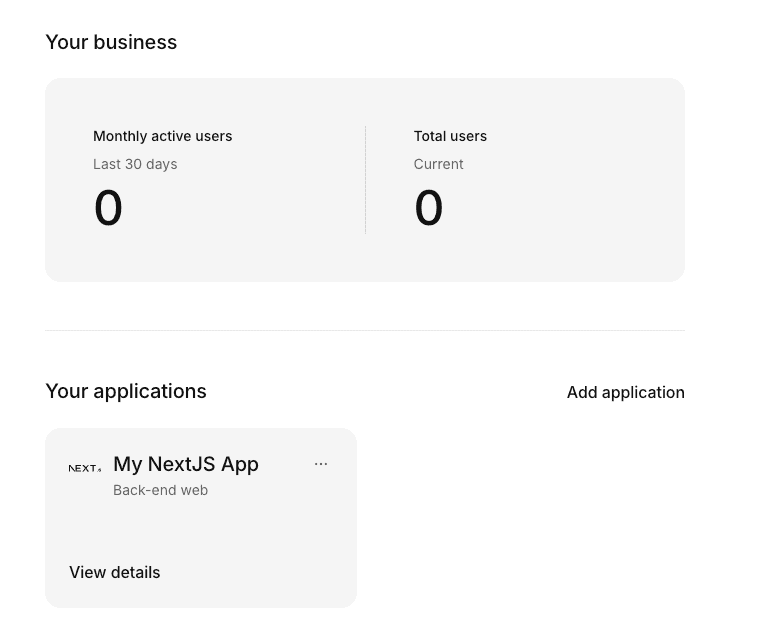
- Open your app by clicking View details on "My NextJs App".
- Navigate to the App keys section.
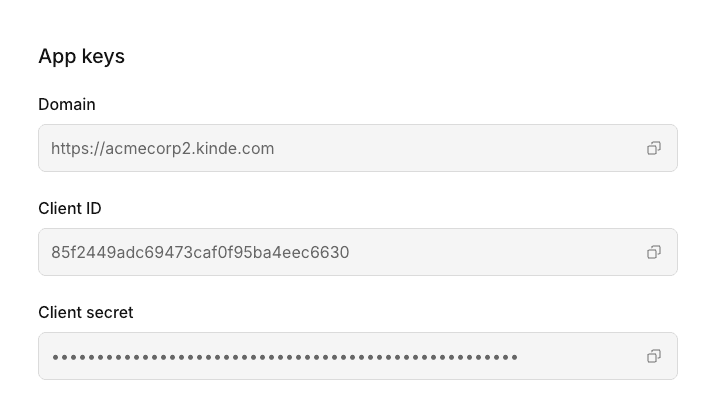
You'll need the following values:
- Client ID
- Client secret
- Issuer URL (your Kinde domain)
4) Configure environment variables in your app
Add the values from App keys to your application's environment.
For Next.js, place these in a .env.local file and restart your dev server.
5) How user provisioning works
- Kinde stores your organization's admin users who need access to the Semaphor console.
- When a team member signs in through Sempahor console, a user record is created or updated in your Kinde.
- Semaphor validates the ID token from Kinde to grant console access.
- Note: Your product's end users (who view embedded dashboards) authenticate through your application, not Kinde.